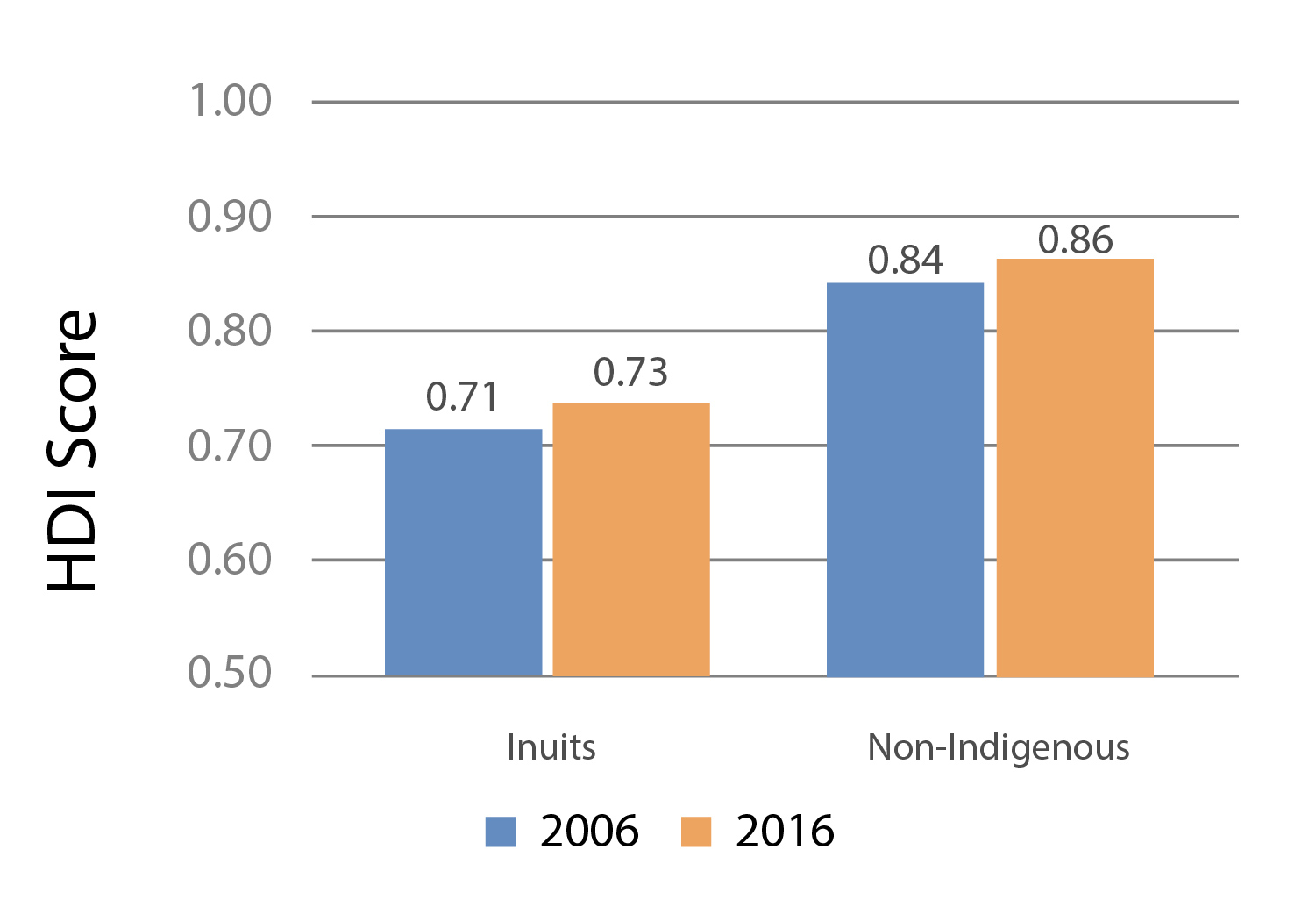Application of the Human Development Index to Inuit in Canada, 2006 to 2016
On this page
Why we did this
The Human Development Index (HDI) has been published by the United Nations Development Program (UNDP) since 1990. It provides a framework for examining countries’ progress on 3 components: health, income and education. Canada is among the highest ranking countries on the HDI with "very high" levels of human development. The previous HDI methodologyFootnote 1 was used as a framework to examine the HDI scores of the Inuit population in Canada, comparing the results to those of non-Indigenous Canadians between 2006 and 2016.
What we did
We adapted the 2018 UNDP HDI methodology for a Canadian context to compare the human development of Inuit to non-Indigenous Canadians based on the 3 HDI components between 2006 and 2016:
- Health is measured by life expectancy at birthFootnote 2
- Education is measured by the average years of schooling for those aged 25 and older and the percentage of the population aged 15 to 34 attending schoolFootnote 3
- Income is measured by average (per capita) income for the entire population with and without incomeFootnote 3
These indicators are combined to form an index that is scaled between 0 and 1.0. The component scores and national HDI score were scaled to allow for international comparisons, allowing the ranking of Inuit to be compared with the 2018 rankings of Canada as a whole, as well as 189 other countries. Further comparisons to previous HDI scores or rankings cannot be made due to many changes in the UNDP calculation of the HDI, its components and available data sources.
What we found
While HDI scores for both Inuit and non-Indigenous Canadian increased between 2006 and 2016, the gaps still remained between the 2 groups (see Figure 1).
HDI scores for Inuit could only be produced for Quebec and the territories, as the small number of Inuit made life expectancy estimates unreliable in the other provinces. Inuit had lower HDI scores than non-Indigenous people in Quebec and the territories and the gap between Inuit and non-Indigenous Canadians remained stable in these regions.
Inuit scored somewhat lower than non-Indigenous Canadians on each of the 3 HDI components. Overall, there was little progress made to close these gaps in the decade between 2006 and 2016, mainly due to differences in life expectancy and income. While gains were made, there is a notable 12-year difference in life expectancy between Inuit and non-Indigenous Canadians.
HDI scores for both Inuit and non-Indigenous Canadian women were somewhat higher than those of men. Furthermore, the gap in HDI scores between non-Indigenous Canadians and Inuit was slightly smaller among women than men.
While Canada ranked 12th internationally in 2018, the Inuit population would have ranked 69th among countries with "high" human development.

Figure 1. Human Development Index Scores for Inuit and non-Indigenous Canadians, 2006 and 2016.
| Year | Inuit HDI score | Non-Indigenous HDI score |
|---|---|---|
| 2006 | 0.71 | 0.84 |
| 2016 | 0.73 | 0.86 |
What it means
This report confirms the continuing gaps in health, income and education between Inuit and non-Indigenous Canadians. The overall HDI score gaps remained essentially stable between 2006 and 2016.
For more information
To obtain a PDF version of the full report, Cooke, M. (2021). Application of the Human Development Index to the Inuit in Canada, 2006–2016. Ottawa: Indigenous Services Canada, or for other inquiries, please e-mail aadnc.recherche-research.aandc@canada.ca.